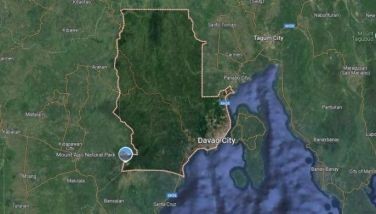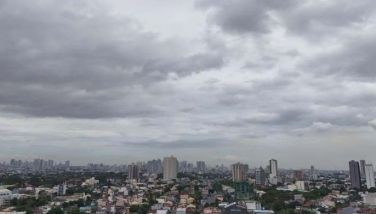P22-B Subic-Clark-Tarlac tollway project hits new snag
May 20, 2005 | 12:00am
MABALACAT, Pampanga — The much-delayed P22-billion Subic-Clark-Tarlac tollway project is facing another snag after this town’s mayor stopped the construction of spur roads here the other day "in the interest of the public and the local government."
Mayor Marino Morales said he did so after learning that the Japanese contractor tasked to build a portion of the 93.77-kilometer tollway scrapped from the project design the exit and entry spur roads connecting the tollway to his town.
Work on the rest of the tollway has yet to start. But the construction of the spur roads began last month since the project was initiated way back during the term of former President Fidel Ramos as part of his programs for the Independence Centennial in 1998.
The spur roads are considered a vital component of the tollway which would extend from the Subic Freeport to the Luisita economic zone in Tarlac.
"The original design of the spur roads provides entrances and exits at the Clark special economic zone and on the Mac—Arthur Highway in Barangay Mabiga, but the builder, the Hazama-Taisei-Nippon Steel consortium, is now bent on changing this by removing the ingress and egress to the barangay," Morales said.
He said the local economy would likely suffer if the tollway bypasses the town’s commercial area in Barangay Mabiga.
He said the Japanese consortium also failed to consult them on the spur roads’ construction.
"The interest of the public and the local government of Mabalacat should prevail in the construction of these support facilities. We do not want to sacrifice the economic development of (our) town so we want to see the project design to make sure that we are not bypassed," he said.
He said a local government has the authority to cancel such projects under Section 301 of the National Building Code.
Meanwhile, Antonio Rex Chan, vice president for operations of the Bases Conversion Development Authority (BCDA), earlier said the Subic-Clark-Tarlac tollway project was expected to start full-blast after its Japanese contractor would have completed its geographical survey in three to four months.
Chan told The STAR that the BCDA’s finance department has issued a certificate of availability of funds, the final requirement for the tollway project to finally push through.
He said the certification means that the P18-billion soft loan from the Japan Bank for International Cooperation (JBIC) and the government’s counterpart fund of 15 percent of the project’s P22-billion cost — or nearly P5 billion — are now available.
The BCDA has obtained loans from Banco de Oro and the Development Bank of the Philippines for the counterpart fund.
The JBIC loan has an interest of only .9 percent annually and is payable in 40 years, Chan said.
Mayor Marino Morales said he did so after learning that the Japanese contractor tasked to build a portion of the 93.77-kilometer tollway scrapped from the project design the exit and entry spur roads connecting the tollway to his town.
Work on the rest of the tollway has yet to start. But the construction of the spur roads began last month since the project was initiated way back during the term of former President Fidel Ramos as part of his programs for the Independence Centennial in 1998.
The spur roads are considered a vital component of the tollway which would extend from the Subic Freeport to the Luisita economic zone in Tarlac.
"The original design of the spur roads provides entrances and exits at the Clark special economic zone and on the Mac—Arthur Highway in Barangay Mabiga, but the builder, the Hazama-Taisei-Nippon Steel consortium, is now bent on changing this by removing the ingress and egress to the barangay," Morales said.
He said the local economy would likely suffer if the tollway bypasses the town’s commercial area in Barangay Mabiga.
He said the Japanese consortium also failed to consult them on the spur roads’ construction.
"The interest of the public and the local government of Mabalacat should prevail in the construction of these support facilities. We do not want to sacrifice the economic development of (our) town so we want to see the project design to make sure that we are not bypassed," he said.
He said a local government has the authority to cancel such projects under Section 301 of the National Building Code.
Meanwhile, Antonio Rex Chan, vice president for operations of the Bases Conversion Development Authority (BCDA), earlier said the Subic-Clark-Tarlac tollway project was expected to start full-blast after its Japanese contractor would have completed its geographical survey in three to four months.
Chan told The STAR that the BCDA’s finance department has issued a certificate of availability of funds, the final requirement for the tollway project to finally push through.
He said the certification means that the P18-billion soft loan from the Japan Bank for International Cooperation (JBIC) and the government’s counterpart fund of 15 percent of the project’s P22-billion cost — or nearly P5 billion — are now available.
The BCDA has obtained loans from Banco de Oro and the Development Bank of the Philippines for the counterpart fund.
The JBIC loan has an interest of only .9 percent annually and is payable in 40 years, Chan said.
BrandSpace Articles
<
>
- Latest
- Trending
Trending
Latest
Trending
Latest
Recommended





























